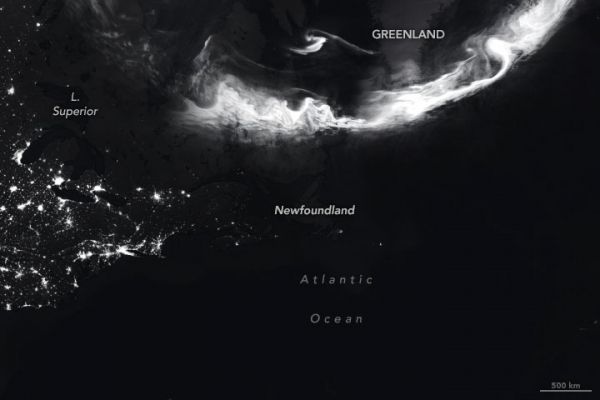Solar Cycle 25 is underway, and that means more frequent opportunities to see auroras—more commonly known as the northern lights and southern lights. One of the best opportunities in recent years occurred on October 11-12, 2021.
In the early morning hours of October 12, 2021, the Visible Infrared Imaging Radiometer Suite (VIIRS) on the NOAA-NASA Suomi NPP satellite acquired images of the aurora borealis, or northern lights, around the Northern Hemisphere. The scene above is a mosaic of several satellite passes showing auroras over eastern North America, the North Atlantic, and Greenland. (Click on the downloadable image to see a wider view stretching to Alaska.) The nighttime satellite image was acquired with VIIRS “day-night band,” which detects light in a range of wavelengths from green to near-infrared and uses filtering techniques to observe signals such as airglow, auroras, city lights, and reflected moonlight.
That same night, astronaut Shane Kimbrough photographed the aurora (image below) from his perch on the International Space Station. The night brought the first sustained, widespread glance at the northern lights for mid-latitude viewers in several years. Many photographers and aurora chasers captured photos that night, some of which were shared with the Aurorasaurus citizen science project.
Read more at NASA Earth Observatory
Image: Mosaic of several satellite passes showing auroras over eastern North America, the North Atlantic, and Greenland (NASA Earth Observatory image by Joshua Stevens, using VIIRS day-night band data from the Suomi National Polar-orbiting Partnership)


